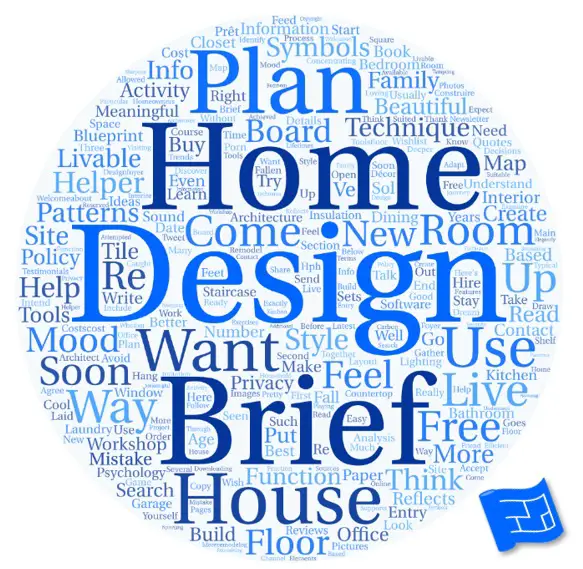- Home
- Create Your Design Brief
Design Brief
You might think that writing a design brief is only useful to you if you're planning to hire an architect, but hang on there a second. Even if you intend to design your home yourself or buy a ready-designed (prêt-á-construire?) house plan, have a think about this...
The more information you can gather to feed into the design process, the more likely you are to make better decisions about the design of your build or remodel.
I'd like to introduce you to three techniques that you can use to discover what you really want in your home. You'll learn how to create a detailed design wishlist (or design brief).
Help with putting together your design brief
I think we can all agree that we’d like our homes to be:
- Meaningful - you want your home to feel just right for you.
- Livable - you want your home to function well, so it supports the way you want to live.
- Beautiful - you want to include beautiful architectural features.

How we usually talk about what we want in our homes
A typical home design brief usually reads something like this...
"We need so and so square feet (or meters) with this many bedrooms and we’re into open plan living. We’d like an office space and by the way we’d like such and such a style of house."
That’s not much information to go on. I think we can do better than that.
So here's how the House Plans Helper Design Brief Workbook will help you put together a design wishlist for your dream home.
Try these techniques. They work best if they’re attempted in the order below.
A home that's meaningful
- Home Design Psychology - This is a home design technique to help you identify the design elements that will create a meaningful home for you and your family.
A home that functions well and is livable
- Activity based home design - Using this technique sets you up to understand exactly how you want to live in your home so that it’s livable and functions well.
A home that is beautiful
- Mood Boarding - You've probably heard of mood boarding before. It's important to figure out the architectural elements in your home that will be part of the build, eg floors, windows, tile patterns, fireplace design. Mood boarding will help you get this done ahead of time.
Design Brief Mistakes
Here’s the three main mistakes that most homeowners make when they’re thinking about what they want in a home.
Concentrating on space first
The number and layout of the rooms comes at the end of the home design journey. An efficient, elegantly laid out design that’s suited to the needs of your household can only be achieved if you examine how you want to live in your home by using the function (activity based design) technique.
Concentrating on pretty pictures
Images draw us in and it would take several lifetimes to look at even a fraction of the number of interior design and décor images available. It’s so easy to get caught up in the latest design trends without thinking about whether or not a particular style would be suitable for you. Use the mood board technique (coming soon) to learn how to use interior design pictures to channel design ideas for your home layout and architectural features.
Playing the imitation game
Other tempting sources of home design ideas are loving a friend’s house and wanting a carbon copy. Or browsing through off-the-shelf house plans online without taking the time to understand how to adapt it to the way you and your family want to live.





